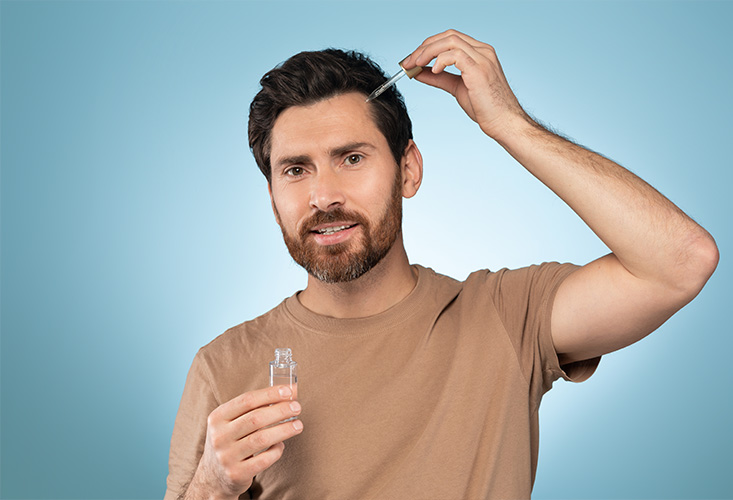If you are facing hair loss or looking for treatment in order to get rid of it, as a solution you’ve possibly heard the names of these 2 non-surgical treatments - Minoxidil and Finasteride. They are often prescribed to prevent, slow down or stimulate the thinning hair too. Furthermore, they are among the most popular treatments and can be used both before and after a hair transplant. A significant difference can be noticed when it is used correctly and regularly. It strengthens both existing hair and transplanted hair. This naturally raises an important question for patients: ‘How exactly should I use Minoxidil and Finasteride before and after my hair transplant?’’ Before we explain how to use Minoxidil and Finasteride, it’s important to understand what these medications are and how they work. Minoxidil is a vasodilator medicine which is suitable for both men and women. It is a tropical (solution or foam) treatment. When it’s used regularly, it helps to widen the blood vessels which improves circulation and delivers more nutrients and oxygen to the hair follicles. It helps keep the follicles in their active growth phase for longer, making the hair stronger and occasionally triggering new growth. Finasteride, on the other hand, is oral medication that must be taken after a proper medical prescription. It functions internally, often by targeting the male hormones that cause hair loss, and may also affect sexual function. Finasteride blocks testosterone from turning into DHT, the hormone that can shrink hair follicles and cause male pattern baldness. By lowering the dihydrotestosterone levels, it protects existing hair, prevents further thinning, and helps maintain the overall density. Before having a hair transplant, Minoxidil and Finasteride can be used to slow down, stop, or revive hair loss. After a hair transplant, finasteride can be used to support existing hair and help transplanted follicles grow stronger. However, it’s important to note that its use is not mandatory. These medications serve as supplementary solutions pre or post hair transplant. Nevertheless, hair transplantation still remains as the most effective and permanent solution with least serious side effects. Proper usage of both medications before and after a hair transplant is important for long-term results. Before the hair transplant, Finasteride is usually taken as a 1 mg tablet once a day and patients can use 1-2 months after the surgery, and must be stopped at least one week before the surgery. For the best results, it should be taken every day at the same time consistently, as skipping doses or taking it irregularly reduces its effectiveness. Furthermore, after a hair transplant, Finasteride can generally be continued at the same dose of 1 mg per day with consistency, and it can be started immediately after surgery since it does not irritate the scalp. On the other hand, Minoxidil should be stopped about 2–3 weeks before the transplant. This break is important because Minoxidil increases blood flow to the scalp, which can make the skin more sensitive and increase the risk of bleeding or irritation during the transplant. After a hair transplant, Minoxidil should not be resumed immediately; it is recommended to initiate it 2–3 weeks post-surgery, once the scalp has sufficiently healed and the transplanted grafts have got rooted. When the healing period is over, Minoxidil can be resumed and can be applied twice a day to the transplanted areas and other thinning zones. Once treatment starts, it must be continued regularly without skipping doses, as even a small lapse can lead to significant hair loss. To avoid this complication, if discontinuation of minoxidil is necessary, the dose should be tapered gradually rather than stopped abruptly.What is Minoxidil and Finasteride and How Do They Work?
Minoxidil and Finasteride Before and After Hair Transplant
Side effects:
How should I use Minoxidil and Finasteride Before and After Hair Transplantation?



 Deutsch
Deutsch
 English
English
 français
français
 italiano
italiano
 Türkçe
Türkçe
 русский
русский
 한국어
한국어

